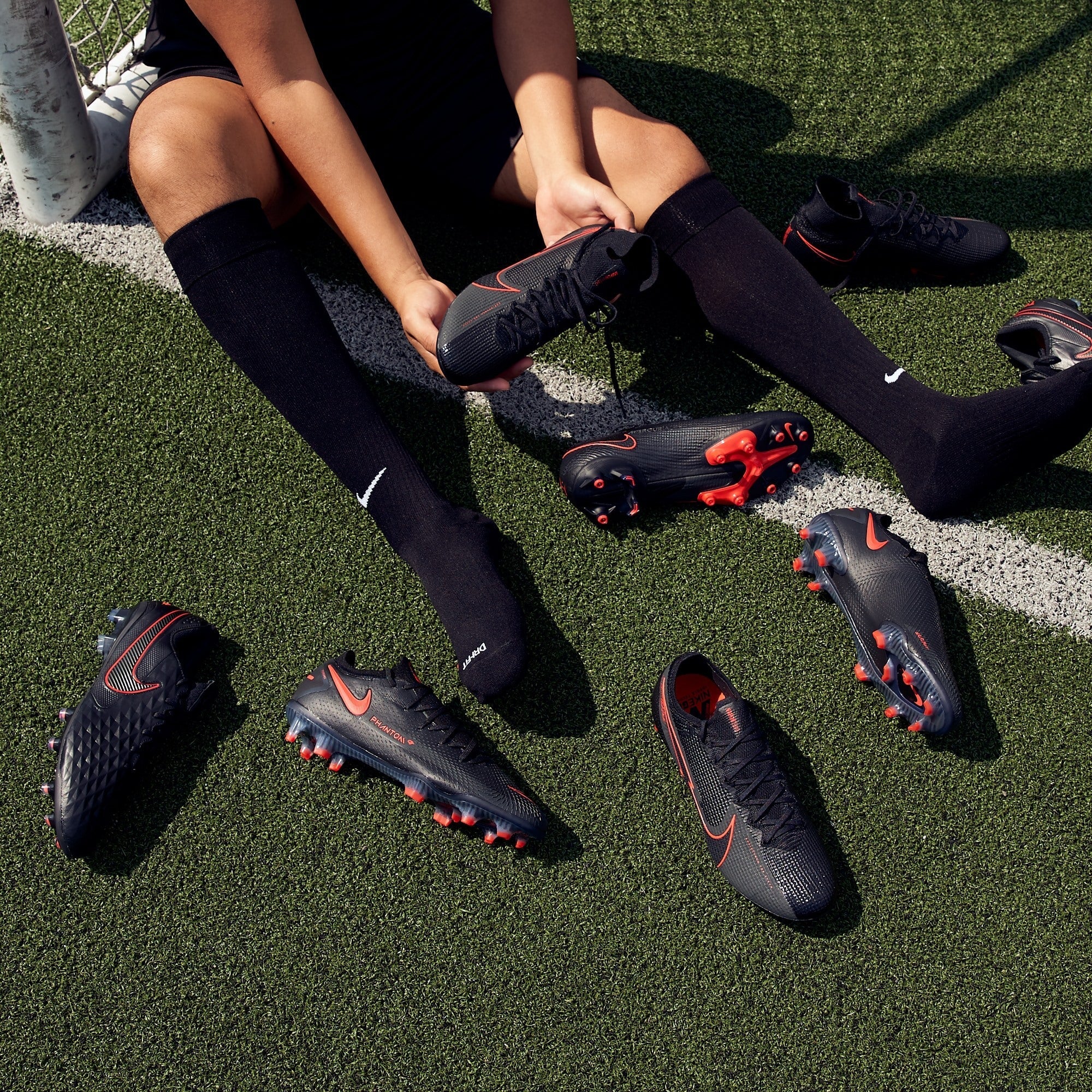With Premium Soccer’s retail location being situated in the harsh cold country that is Canada, half of our soccer year is spent indoors on artificial ground surfaces. As for the other half, artificial fields are becoming more and more abundant outdoors due to low maintenance costs and overall durability. This begs the question that almost every soccer parent asks and that every single current soccer player should know the answer to: Should footwear designed for natural grass be used on these artificial surfaces? Before continuing with this article, I strongly recommend heading to our initial article on different surfaces & footwear to inform yourself better on the subject.
The short and simple answer to the question above is: No. We often use a car metaphor to explain it to customers: Winter tires are not meant for Summer conditions, so you can always use them and they’ll work, but they are not designed for that purpose and will wear out quicker. The same can be applied for the long and aggressive studs found traditionally on firm ground (FG) footwear. These cleats nowadays are made with plastics and after extensive use on artificial surfaces of rubber or sand, these plastics will heat and wear and eventually shorten or possibly even break.

An issue with using the wrong stud configuration on a certain surface is the breaking of any guarantee with the manufacturer. A common issue becomes sole separation where the bonding between the plastic outsole begins to detach from the upper material. This often occurs around the instep and front toe where most passing and shooting originates. It is therefore the consumer’s duty to inform themselves on the properly designed footwear through channels such as retail store staff or through informative content by the brands or the retailers.

There also remains a question of safety, with FG footwear the outsole and studs are traditionally aggressive in nature for the most amount of grip on natural grass and soil surfaces. This means the studs themselves are longer, sharper, wider and bladed/triangular. This sort of stud when used on artificial surfaces can easily be too aggressive and remain stuck or lodged in place during a shift in direction or a collision with another player. This in turn can cause damage to knee, ankle and hip joints, ligaments or muscles.
To conclude, many players do ignore these concerns and continue to use the wrong footwear on the wrong surfaces. This occurs primarily to the sheer amount of widely available FG boots as opposed to the amount of AG boots. Brands market and manufacture their FG boots primarily and this causes a social belief that these are the best boots to have and wear.

If you are truly stuck and unable to find the proper model and have to wear FG footwear on artificial grounds, the most suitable and less susceptible to injury are those FG boots with shorter studs and round/circular studs. The goal is to have a stud shape that will not dig too deep into the artificial ground and can rotate easily in this ground. We at Premium Soccer however do not recommend the use of FG footwear on AG surfaces.
